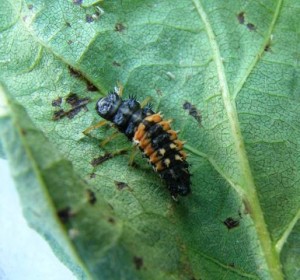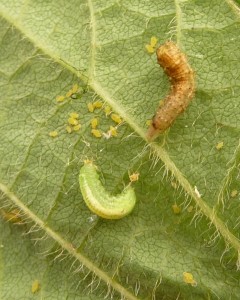
Features
Agronomy
Soybeans
Effect of temperatures, natural enemies on soybean aphids
By John Gavloski, MAFRD Entomologist
Effect of temperature on soybean aphids: As with other insects, soybean aphids have a temperature range where development is optimum, with development being slower below and above the optimum range. For soybean aphid the temperature for optimum growth is around 27 C. At lower temperatures development will be slower. At the other extreme, in experiments where soybean aphids were kept at high temperatures, nymphs did not complete development at 35 C and died within 11 days (J. Econ. Entomol. 2004: 854-861).
Soybean aphid consumption by natural enemies: High levels of natural enemies have been reported by some monitoring levels of soybean aphid. Predaceous insects are the easiest natural enemies to recognize; levels of parasitism and insect pathogens are not often as obvious but with training can be estimated as well. Lady beetles, lacewings, and larvae of hover flies are some of the common and easily recognizable predators in soybean fields.  When checking soybean fields, consider whether the aphid populations are increasing or decreasing, and the level of natural enemies present.
When checking soybean fields, consider whether the aphid populations are increasing or decreasing, and the level of natural enemies present.
Common species of lady beetle that may be noted in soybean fields include the sevenspotted lady beetle and the multicoloured asian lady beetle (Figure 1).
A study looking at predation rates by these two species of lady beetles on soybean aphids found that for sevenspotted lady beetle third instar larvae could each consume up to 105 aphids per day, adult females could each consume up to 115 soybean aphids per day, and each adult male up to 78 aphids per day when soybean aphids are high. (Environmental Entomology: 2009. 708-714). For multicoloured asian lady beetle, third instar larvae could each consume up to 112 aphids per day, adult females could each consume up to 95 soybean aphids per day, and each adult male up to 53 aphids per day when soybean aphids are high.
 Some have been sending in photos of hover fly larvae, which may be found in many crops where aphids are present, wondering what they are. Although the adults, which are good bee mimics, are easy to recognize, the larvae may not be as well known. Note that hover fly larvae (Figure 2) are legless, and narrow towards the head. There are different species that can vary in colour, often brown or green.
Some have been sending in photos of hover fly larvae, which may be found in many crops where aphids are present, wondering what they are. Although the adults, which are good bee mimics, are easy to recognize, the larvae may not be as well known. Note that hover fly larvae (Figure 2) are legless, and narrow towards the head. There are different species that can vary in colour, often brown or green.
August 19, 2015 By Manitoba Agriculture Food and Rural Development